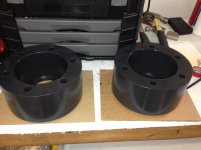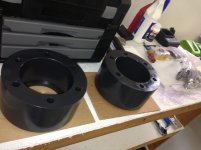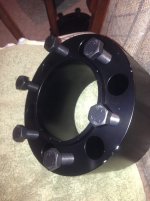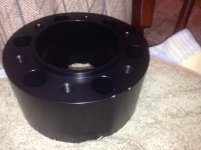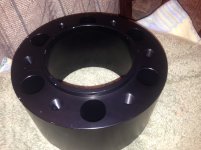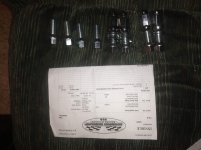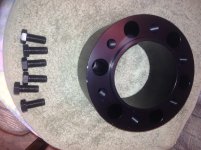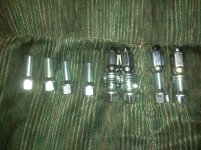DKCDKC (and all),
I reread the thread and I also think the comments are interesting. Esoteric knowledge is by definition difficult for most people to understand and we've had posters make valid points, but not always talking about the same situation. It is impossible to confine a discussion of tractor rollover angles to a static situation - and we really shouldn't because they are moving - but you have to start somewhere. With the static angles in mind, then it makes sense to back way off from them because of the variables. My goal here was to enhance safety awareness, not empower folks to take greater risks.
DarkBlack and CalG, methinks, kind of got into a talking past each other discussion. My point, and CalG's, was that for a FLAT hillside - in other words the front and rear tires are on a constant, flat, inclined surface, the roll axis will, by virtue of the tractor tip over angle being greater than the pivot stop angle not be an important factor. The tractor will behave irrespective of the roll axis point for a pivoting front axle.
In my example I talked about (and envisioned without thinking about the pivoting front axle) jacking the tractor up on one side on level ground to see the angle at which the CG would move outside the support base and tip over. And if we did that I now realize, thanks to DarkBlack and CalG, that the front axle would pivot and keep the front wheels flat while one rear wheel went up in the air. So DarkBlack's explanation about drawing an imaginary roll axis is correct. It would initially be the line from the "downhill" rear tire to the center of the front axle, but when the axle hits the stops that roll axis moves downward and "downhill" towards the outside of the "downhill" front wheel. That would be a dynamic effect, but I also don't see it as a catastrophic rollover inducing moment. If the tractor is stable at, say a maximum front axle pivot angle of 20 degrees, and we keep jacking it up to 21 degrees the tractor doesn't roll over. All that happens on a level floor is the "uphill" front tire moves up 1 degree. Now with the front axle is behaving like a rigid rear axle so if we keep jacking up the same side the only variable (ignoring tire deformation, if any, and lack of friction so the tractor slides) affecting rollover is where is the CG? The instant vertical CG exceeds the lateral boundary of the support wheel base the tractor will roll over. And as the math shows, even with a wide variety of vertical CG's, it's pretty high.
I'll even make an additional point about the pivoting front axle now that I've given it more thought. The practical effect of the pivoting action is to lower the tractor's CG by lowering the front of the tractor with respect to where it would remain with a fixed axle. This shouldn't be too hard to imagine - picture two identical tractors except that one has the pivoting front axle. Put them side by side and observe them from the front while one side is jacked up. The fixed axle tractor's front end goes up evenly with the rear end. But the pivoting axle tractor's front end remains level side to side, and lower to the ground, until the pivot stops are reached. At that point front end movement to the side keeps pace with the rear end's upward motion as the jacking up continues. If we kept jacking I think the fixed front axle tractor would tip over before the pivoting front axle tractor would tip over - simply because the pivot has allowed the overall tractor's vertical CG to remain below the fixed axle's CG. If this is a practical effect of a pivoting front axle, which my tractor is probably equipped with because it is four wheel drive and a pivoting front axle allows the front tires to grip better across uneven terrain, then it is an aid to preventing side rollovers.
Anyway, my reply to you is a reply to all - and I'll close by mentioning that while I was in the process of lifting mounded FEL buckets of gravel on level ground my wife thought she saw my rear tire lift a tiny bit. I didn't notice. But I shook some of the gravel out so it wouldn't fall out on the way to the dump site and that lightened the load a bit. And then I carefully drove almost straight down a 10-15 degree grassy hill - FEL first - about 25 times. Slow and steady, and feeling like the loaded rear tires and bush hog back there were going to keep me from tipping forward. And keeping the bucket as low as I could without spilling gravel.
And ready to drop the FEL to the ground immediately if I felt the rear end lifting! The nightmare scenario!
Best,
Rhino
